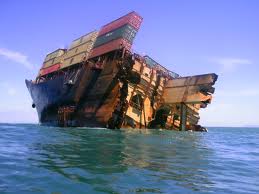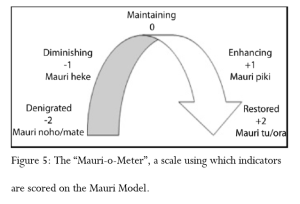
The grounding of the MV Rena on Ōtāiti, 5 October 2011, had significant environmental impacts that were experienced in anthropocentric terms as impacts upon social, economic and cultural well-being. The Rena Long-term Environmental Recovery Plan goal is to “restore the mauri of the affected environment to its pre-Rena state”.
The stated goal of mauri restoration is significant as this positions the environmental recovery in conceptual terms aligned to the aspirations of the indigenous peoples of the affected area. The reference to mauri facilitates the recognition of important meta-physical considerations not otherwise included in conventional impact assessment and monitoring. The Mauri Model decisionmaking framework (Morgan, 2008) is being used to investigate this challenge and discuss the sustainability implications of the disaster mitigation strategies being promulgated.

The Mauri-ometer (Morgan, 2008) assessment uses four equally weighted mauri dimensions. The mauri dimensions equate to environmental, cultural, social and economic well-being. The impact upon mauri is determined as the change in life-supporting capacity of the indicator being considered. Mauri can be measured qualitatively or quantitatively. The conceptual basis of the Mauri Model resonates with other cultures and thus this research may suit other contexts using ecological assessment to understand indigenous impacts.
A paper by Tumanako Ngawhika Fa‘aui and Te Kipa Kepa Brian Morgan.
You can freely access the full paper through the MAI Journal HERE
